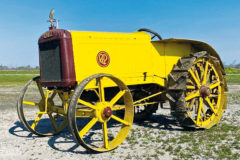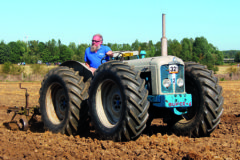Very rare Massey Ferguson 168
Posted by Chris Graham on 8th September 2020
Willie Carson searches out a rare Massey Ferguson 168, with an original shuttle transmission.
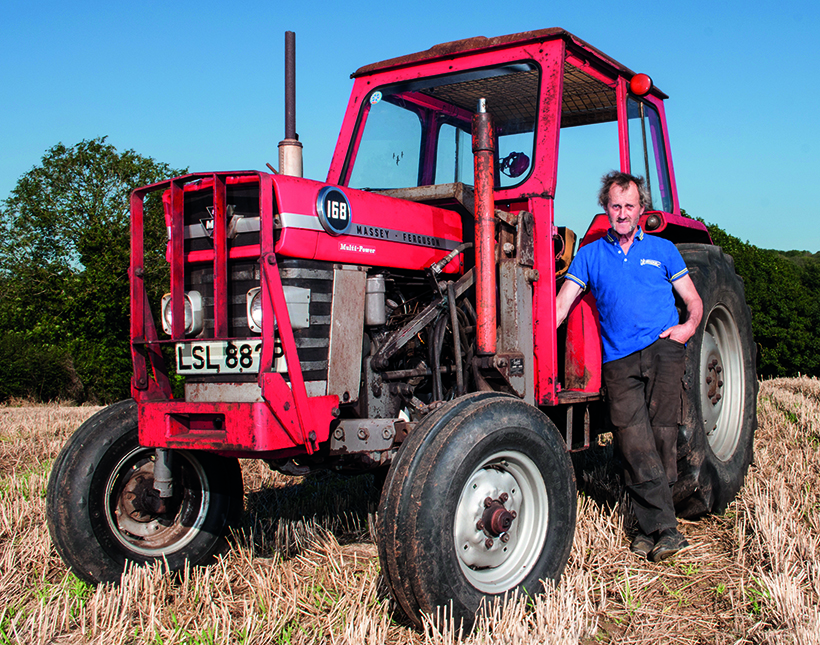
Rare Massey Ferguson 168: Roy’s rare tractor enjoys semi-retirement now. It might be time to bring out the MF 71 single-chop.
The history of Roy Baxter’s mixed beef and cereals farm in the Bann Valley, Northern Ireland, is a bit of a grey area. Well maybe just a little bit grey; mostly it’s red and grey. Roy explains: “My father farmed 50 acres here, and the first tractor I remember was the wee, grey Ferguson TED 20. It was bought new in 1954, along with a two-furrow Ferguson plough, and did all the work until he bought a Massey Ferguson 35X at a dispersal sale in the early 1970s.
There were only 1,500 hours on the clock and it had been looked after very well, so it wasn’t cheap. The bidding went to £550 and everybody thought he was mad to pay that price, but it’s still here, so it was a good investment.”
A long line of Massey Fergusons
This was the start of a long line of Massey Ferguson tractors that have worked the land on the Co. Antrim farm. “The next tractor to appear was a Mk1 165, with no cab. This tractor had 4,000 hours on the clock, but it had been reconditioned with a brand new A4.203 engine and new tyres, and cost £1,800. It spent a lot of time on the MF 71 side-mounted, single-chop, forage harvester.
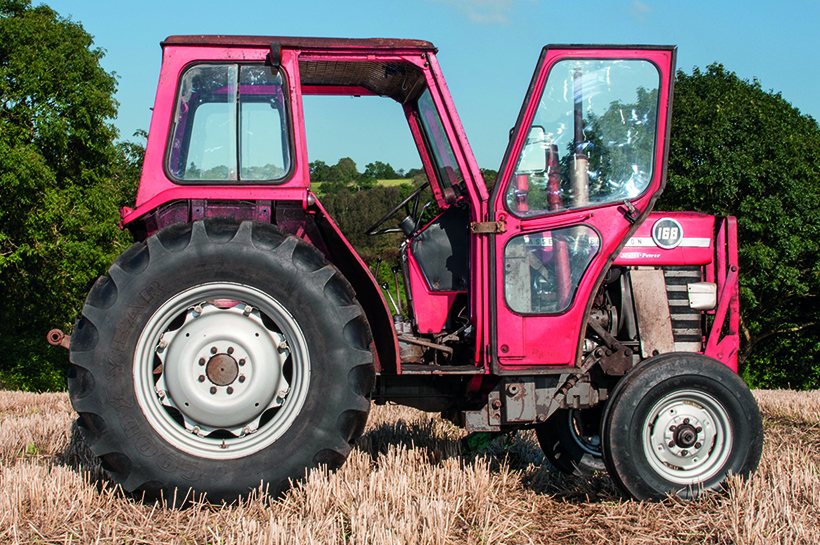
The extra six inches made cab access much better.
“After my father had died, I was taking up the reins and decided to move up to a double-chop for silage harvesting, so I needed more horsepower. I bought a 590 2WD with a red cab, and an MF 80 loader, costing £1,800. That tractor spent a lot of its time on the Kidd 246 at silage time, or pulling the slurry tanker.
“I started going across the water to the Cambridge machinery auctions and, on one of my trips, I met a tractor dealer from Perth called John Craig. At the time I was looking for another tractor, and he said he had a very clean, 2WD, MF 690 for sale. I was very interested so I arranged to fly over the Scotland with my wife to view the tractor and spend a few days away at the same time.
“Before we left, I rang to let him know that we were on our way, only to hear that John’s father, knowing nothing about our trip to Perth, had sold the tractor to someone else. He was decent enough about it and sent us the cost of the flights, but that wasn’t the last time that I heard from him.”
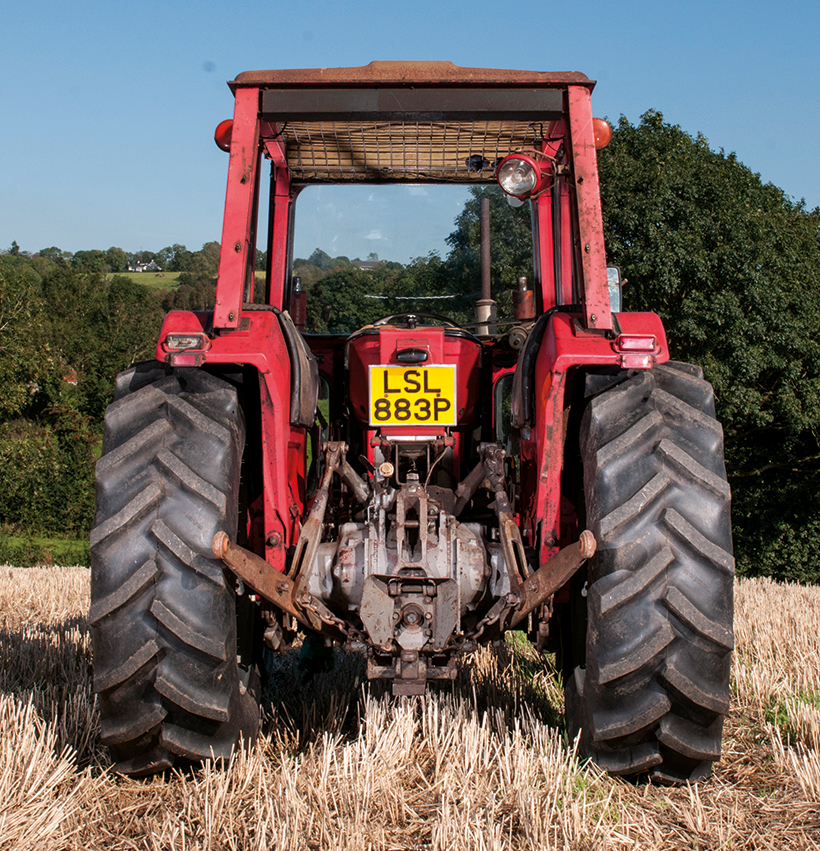
The MF 168 was fitted with 36-inch rims as standard. Roy’s tractor has 30-inch rims and Goodyear 16.9 R 30 tyres.
When Roy was an impressionable schoolboy, his neighbour bought a new Massey Ferguson 168, with a GKN Sankey cab. “It was used to power a New Holland double-chop forage harvester, which was taking it to the limit of its capabilities, but I thought it was a great tractor.” The 168 was the mid-range offering in MF’s Super-Spec range of tractors, which augmented the original Red Giants line-up.
Marketed as a step up from the successful 165, it incorporated several upgrades in power, performance and convenience. Perkins engineers increased the engine’s stroke length, pushing output to 69hp, creating a very willing workhorse with 12 forward gears available, thanks to Massey Ferguson’s change-on–the-move, Multi-Power transmission, which was fitted as standard.
A six-inch spacer was inserted between the gearbox and the back axle, which gave further advantages. Firstly, the centre of gravity of the tractor was moved forward which, with redesigned lift arm geometry, improved the hydraulic lift capacity to an impressive 4,000lbs. Another consequence of this extra machine length was evident in the cab. Climbing in through the door, the easy access afforded by the six-inch wider doorway is very noticeable. Add to that the longer footplates, and the extra space between the seat and the steering wheel, and the advantages become very obvious. The driver is also treated to the more comfortable Float-O-Matic suspension seat. It was all looking very good for the Super-Spec Eights.
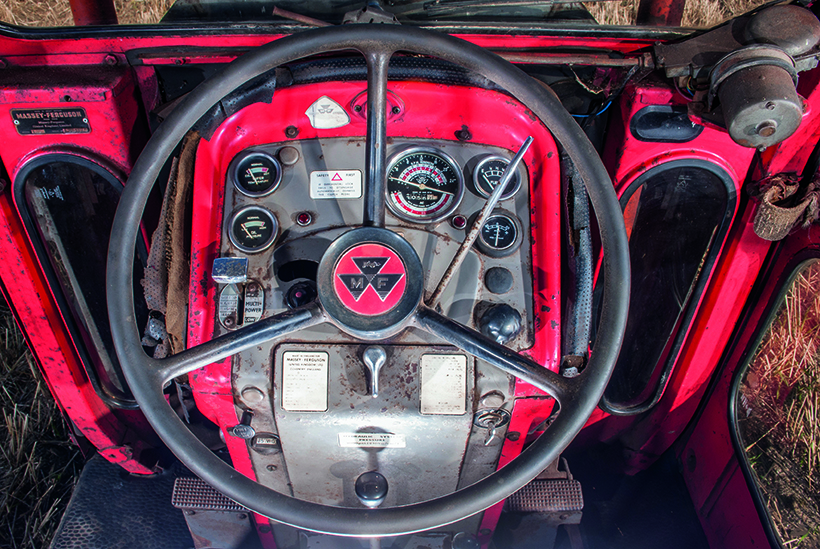
The dash will be familiar to those who drove Red Giants. There are just 3,056 hours on the tractormeter.
Realising the dream
Roy explains how he realised his dream of owning a 168 like the one he’d seen in his neighbour’s yard. “In July, 2006, John Craig rang to say that he had a really clean 1976 MF 168 for sale, with a Cameron Gardiner loader and shuttle gearbox. Would I be interested? I made the trip to Scotland and agreed to buy it if John arranged delivery to Northern Ireland. He put it on a trailer and towed it to the docks at Cairnryan, drove the tractor on to the ferry and met me in Larne. I paid him the money and he went back as a foot passenger. I was 15 when I saw my first 168, but I was nearly 50 when I finally bought one. Some things can take me a while.”
Roy was just the third owner of this well-maintained piece of Banner Lane history. “It was originally sold to a coal merchant in Alloa, Clackmannanshire in Scotland, where it was used for loading railway trucks,” he explained. “After three years, he traded it in and it was then bought by a Perthshire farmer, who kept it for the next 25 years. The clock showed about 3,000 hours, and everything about the tractor would back that up. The pedals are still tight on their pivots, and show little wear on the treads, the tinwork is still original and even the basic sound deadening is in remarkably good condition, considering its age.
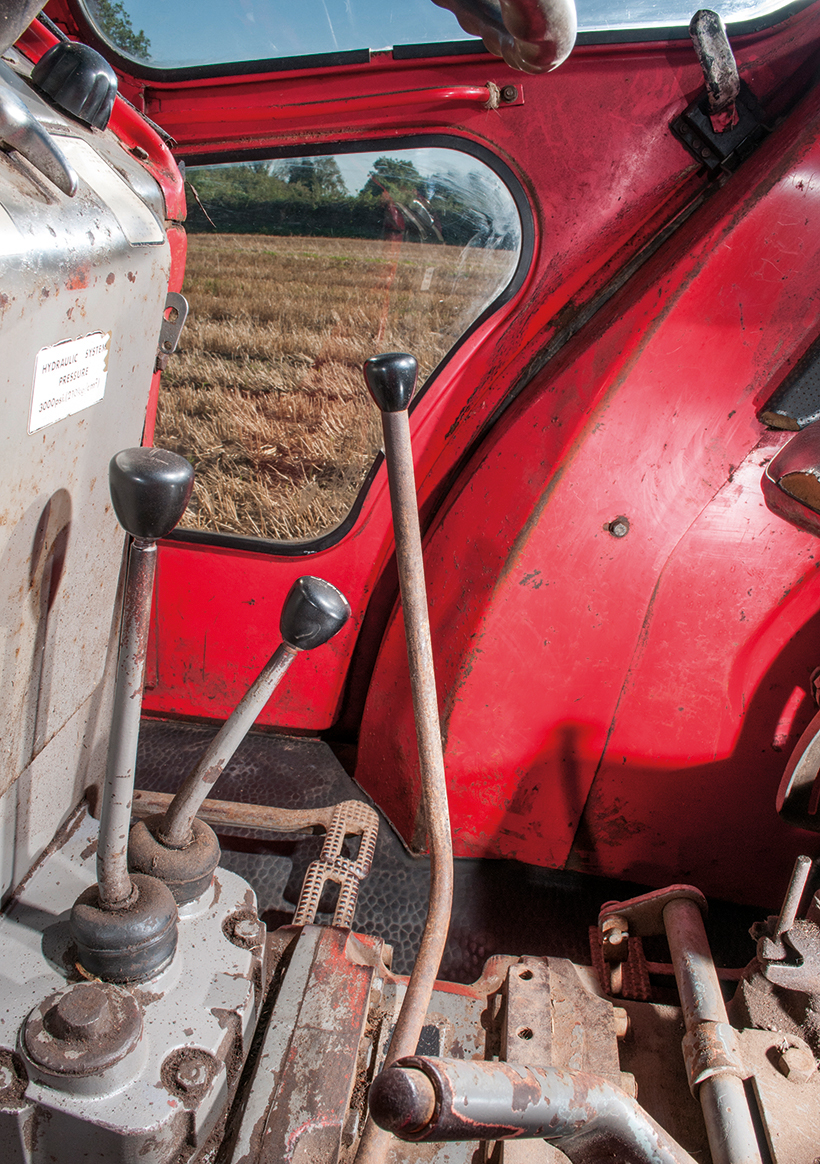
The long lever operates the shuttle gearbox, with equal speeds in forward and reverse gears!
“I had very little to do to it when I bought it, apart from fitting a new PTO brake kit (it’s the same kit as used in a 590), and tidying up the rims. I sand-blasted and resprayed them, then fitted new, Goodyear tyres. After a while, the engine started to show signs of wear, presumably from working in the dusty environment of a coal yard during its early life.
“I had it rebuilt and have had no bother with it since then. I’ve used it as my sprayer tractor and for general duties, like topping the cattle grazing in the summer. It came with the Cameron Gardiner loader, but I have an MF 50D for loader work, so I took that off the 168. It’s still a useful tractor.”
A rare adaptation
What makes this 168 so interesting is what sits behind the main transmission. The inclusion of the six-inch spacer in the Super-Spec tractor design allowed MF’s engineers to experiment with various other gear train possibilities. One option was to use the space to fit a creeper ‘box, while another was to fit a transfer ‘box for 4WD conversion. But Roy’s 168 is fitted with yet another adaption, a forward/reverse shuttle.
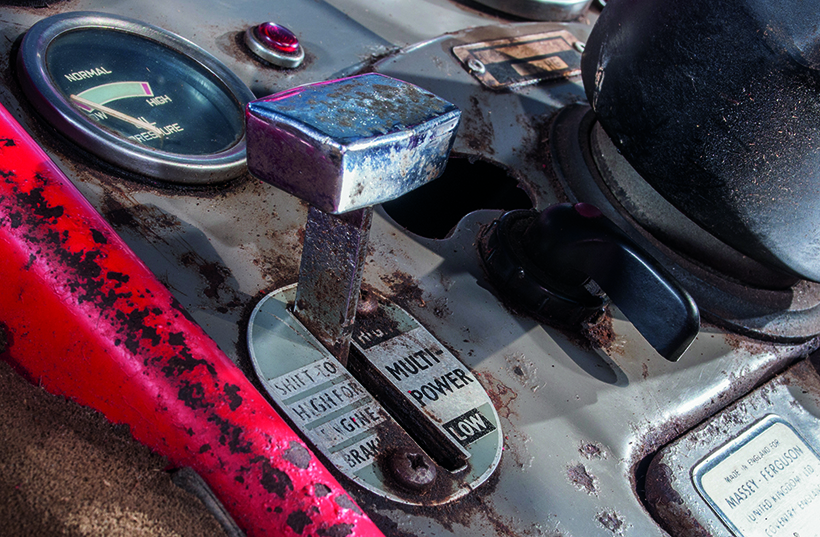
Multi Power was standard on the 8 Line tractors. The 168 could be ordered with a ‘down-spec’, eight-speed ‘box.
So rare is this adaptation that it’s taken some detective work by former Massey Ferguson employees to unearth its history. One thing is certain; the 168 would have rolled off the Banner Lane production line with the standard, six-inch spacer just like all the rest. It seems almost certain that the fitment of the shuttle would have been carried out by the mechanics at the MF distributors, in Scotland.
The kit was available for both MF 100 Series 5 and 8 Line tractors, but adapting a 165 would have involved fitting longer brake rods and a Super-Spec cab to allow for the increase in length. The shuttle kit would have been ordered from Central Parts Operation in Manchester, and fitted according to instructions included in the relevant Service Bulletin.
Fitting involved blanking-off the reverse selector on the main transmission (imagine the possibilities if there were two ways to engage reverse!), installing the shuttle ‘box housing in place of the six-inch spacer and completing the task by fitting a new 1,2,3 gear knob on the main gear selector. This was not a cheap option, and would have been out of reach for most farmers, so it would have mostly been of interest to more industrial applications, such as a coal yard.
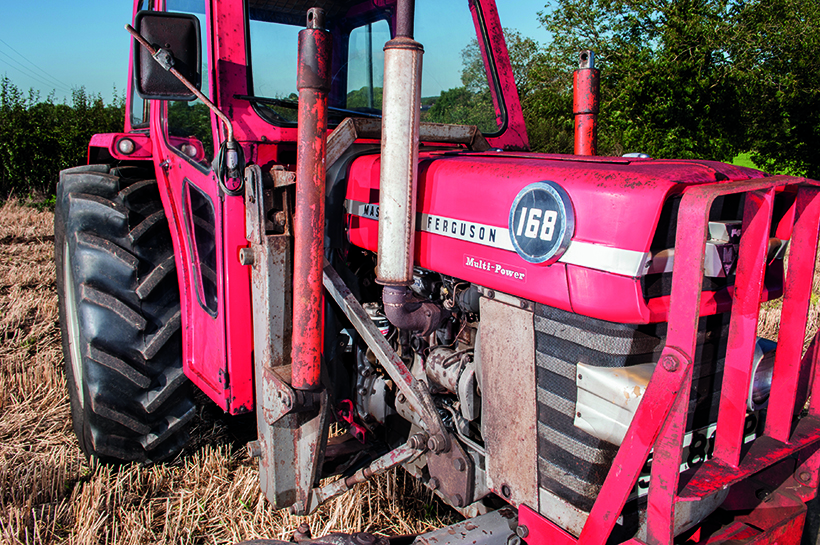
The Cameron Gardiner loader bracket is a substantial piece of engineering.
During the 1970s, there were loading shovels available with clutchless direction change, a much more attractive option, so there would have been little demand for a gearbox lacking any form of synchromesh such as this. Due to its basic design, its rarity was assured from the minute it left the drawing office.
Roy is content with his Super-Spec Red Giant. “I’ve kept the loader brackets on the tractor since they are part of its history, and I can use the loader as a back-up if necessary. I’d like to fit a period-correct pick-up hitch, but I’m struggling to find one. A 690 hitch would fit, but it wouldn’t look right. Apart from that, I’m still very content with my 168. Just like the TED 20 and the 35X, this one’s a keeper.”

Even the original ploughing light is present on this time-warp machine: Roy has bagged a beauty.
Classic Massey & Ferguson Enthusiast would like to thank former MF employees Chris Clack and John Kirkham for their help in the research for this feature. Chris was MF regional sales manager and John was service manager for Scotland.
For a money-saving subscription to Classic Massey & Ferguson Enthusiast magazine, simply click here



